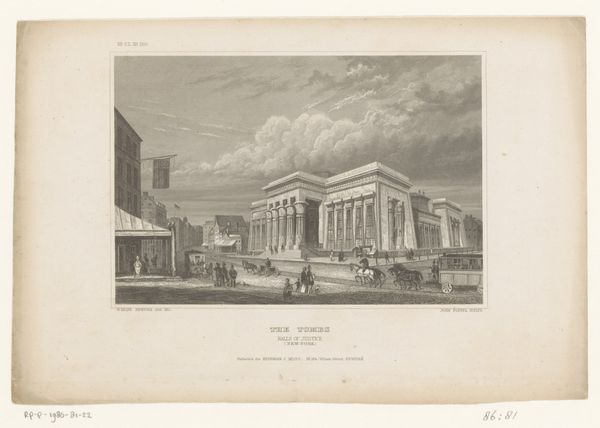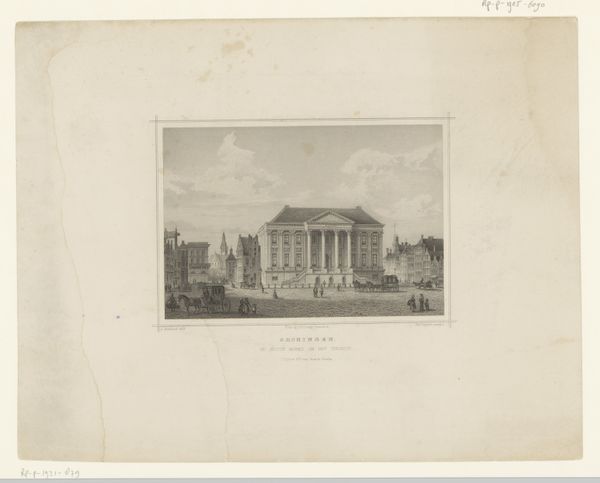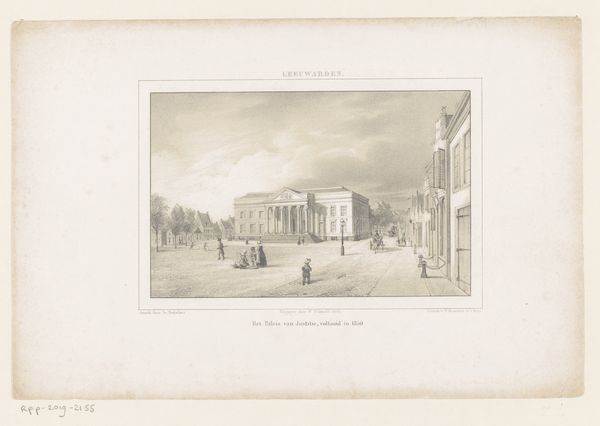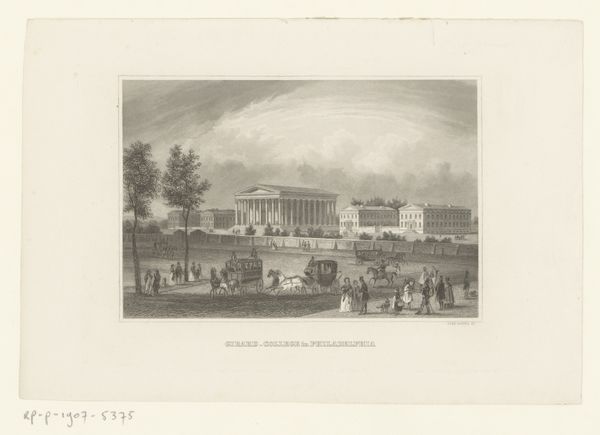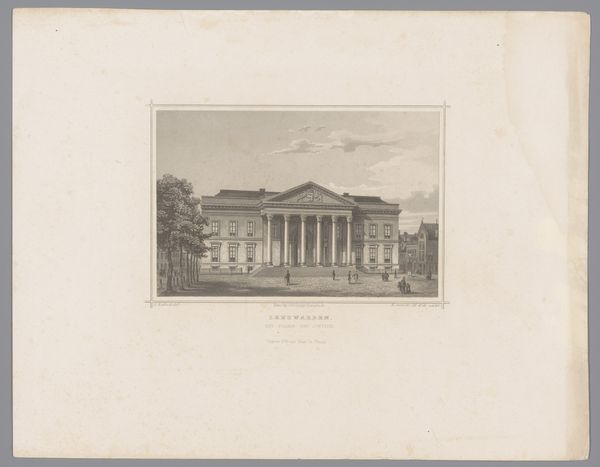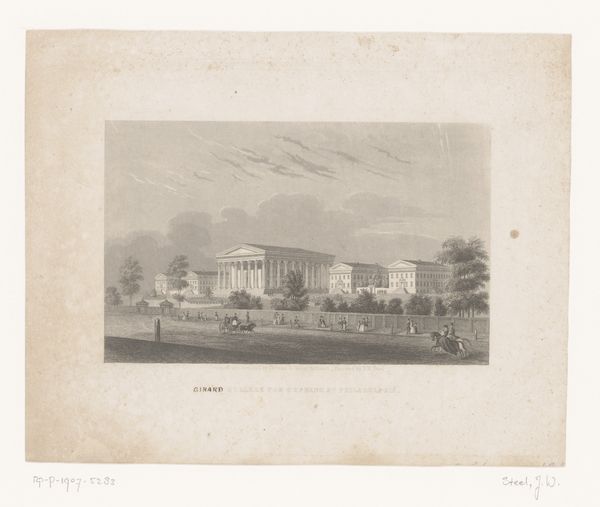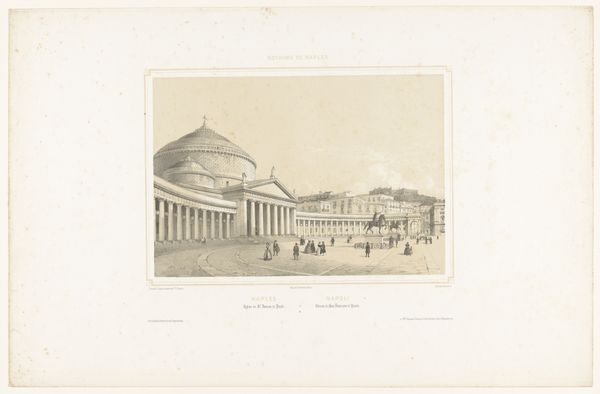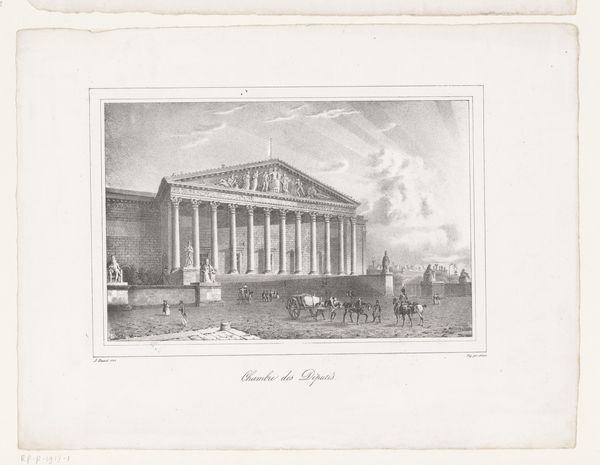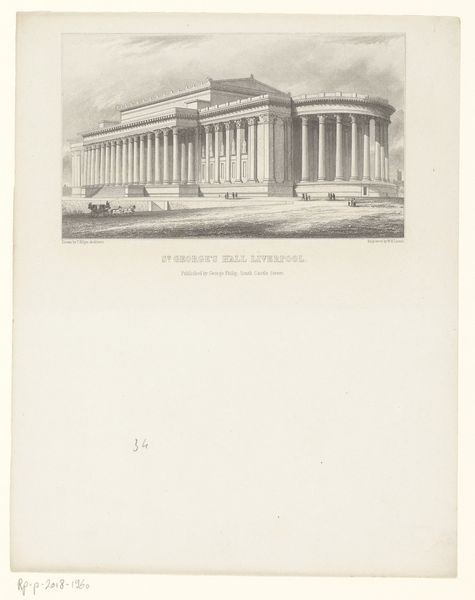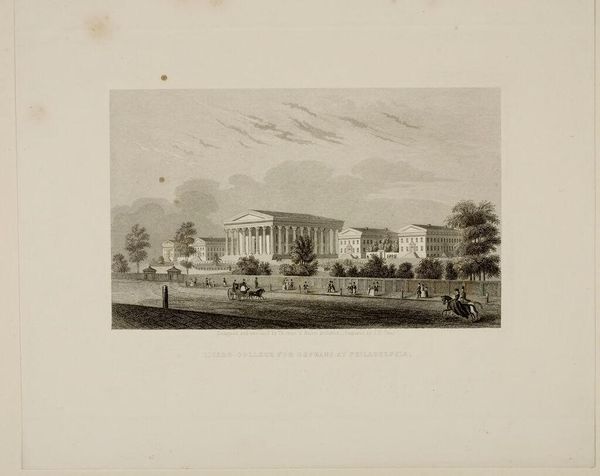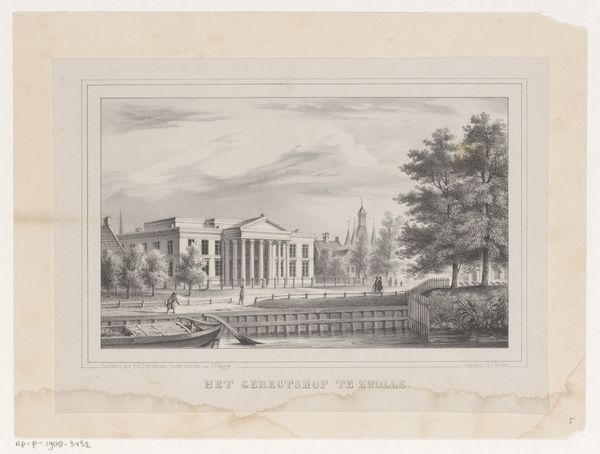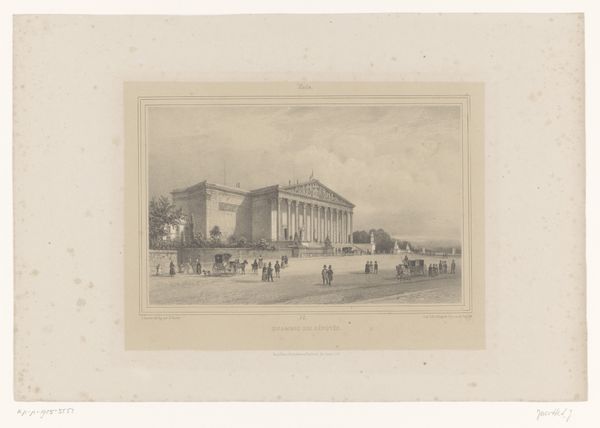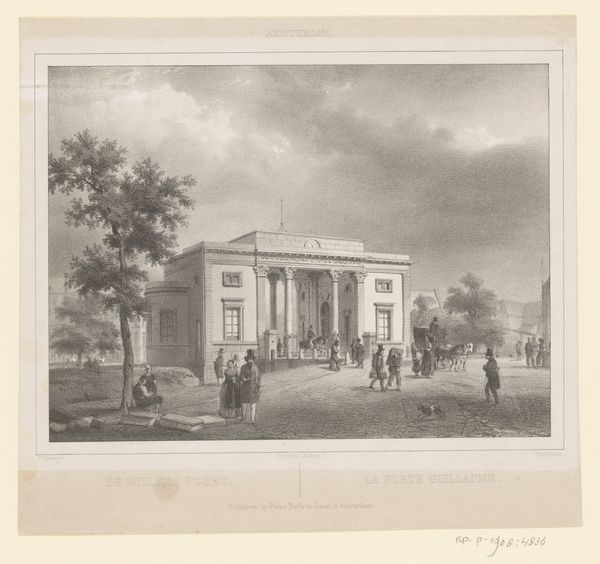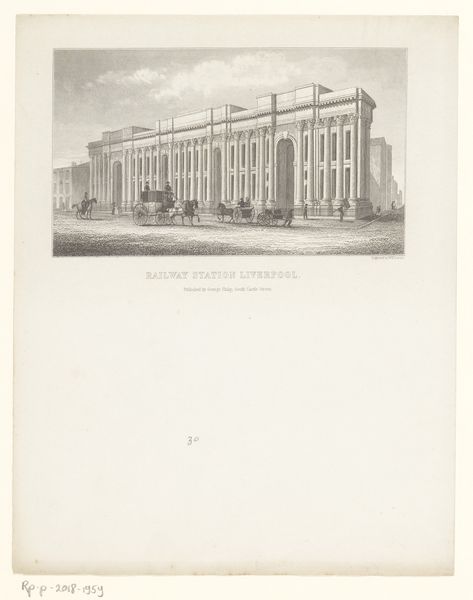
drawing, print, engraving, architecture
#
drawing
#
aged paper
# print
#
landscape
#
cityscape
#
engraving
#
architecture
#
realism
Dimensions: height 315 mm, width 482 mm
Copyright: Rijks Museum: Open Domain
Editor: This is Théodore Fourmois’s “Station van Haarlem,” created between 1842 and 1867. It's an engraving depicting a classical-style train station, bustling with people. The light and shadow create such an interesting effect; it feels like a photograph. How do you interpret this work? Curator: This work, viewed through a contemporary lens, allows us to examine the impact of industrial progress on society. It represents a specific moment where architecture became intertwined with revolution, not only offering mobility, but also reconfiguring social experience by facilitating encounters between classes and regions, for better or worse. This classical design also reinforces certain social stratifications – what stories do these aesthetic choices communicate, do you think? Editor: I hadn't considered it that way. The classicism feels…aspirational, maybe? Like they’re trying to ennoble this new technology. Were there different reactions to this industrialization in Haarlem at the time? Curator: Absolutely. Haarlem, like many cities, likely had varying responses, from excitement and opportunity, to fear of the changes that industrialization and its byproducts – pollution, exploitation, resource depletion – wrought upon daily life. Notice how people are arranged. Is this a truthful observation or idealization of real social encounters at the station? Editor: It is idealized. It feels staged almost, which makes sense given the era. I'm seeing how much more is being communicated. Thank you! Curator: The pleasure is mine. It's rewarding to view art with an understanding of its power structures. It challenges us to examine our world more consciously.
Comments
No comments
Be the first to comment and join the conversation on the ultimate creative platform.
